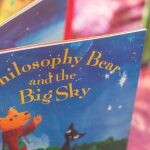English - Writing
To support children to achieve their full potential in writing quality texts are chosen as a termly stimulus for English which will fascinate and engage. A planned sequence of teaching is followed in order to enable the children to meet a specific end of unit writing outcome; one for fiction and one for non-fiction.

The sequence begins with sharing the text followed by detailed analysis. Key vocabulary and phrases from the text are highlighted and studied to expand the children’s word understanding. Weekly grammar lessons are followed by opportunities for the children to practice these skills independently in their own writing. Each unit culminates in an end of unit write which will use the learning from the whole unit. Children are taught editing and revising skills in order to improve their own work. This sequence is recorded on the English Working Wall with examples for the children to use as prompts.
Throughout the year children will write for a variety of purposes and audiences across fiction and non-fiction. Writing to entertain includes description, poetry and story writing. Story writing covers six basic story plots from Pie Corbett including wishing, warning, conquering the monster, finding, journey, losing, meeting, rags to riches, fear, and character flaw tales in order to equip them with frameworks around which to base their own writing. Children also focus on a different non-fiction writing purpose including to inform, to argue and to explain, appropriate to their age and ability including a variety of text types: recount (newspaper and diary), report, instruction, explanation, discussion and persuasion. When a text type has been covered there are short burst opportunities for children to revise these throughout the year including outside of the English lesson in Topic, Science or Learn Together lessons. Children are supported by guided and modelled writing.
In addition to the above, whole school initiatives successfully raise the profile of writing in school. This includes weekly Star Writers from class work celebrated.
There are high expectations of handwriting across the curriculum areas.
EYFS: Children learn the correct letter formation in Reception daily phonics lessons alongside using Write Dance to form precursive patterns. It is essential that children learn correct letter formation; starting in the correct place with movement in the correct direction are to be preferred to uniformly regular letters achieved through wrong movements. See the Letter Formation Instruction sheet in the gallery below, which show the letters with red starting buttons and arrows for direction of movement.
Fine and gross motor skills are developed through a range of activities. In terms 5 and 6 children begin to form precursive letters. In precursive writing children begin each letter from the line using a lead-in and a lead-out to aid the joining of letters.
Key Stage 1: Precursive handwriting is taught in year 1 as children continue to learn forming precursive letters correctly. Diagonal and horizontal joins are introduced and practiced regularly with children all using neat, cursive handwriting by year 2.
Key Stage 2: In years 3 to 6 cursive handwriting is developed so that children can write fluently with stamina for more prolonged periods. The Handwriting Progression Guide shows how the consistent approach in the teaching of handwriting across the school.

